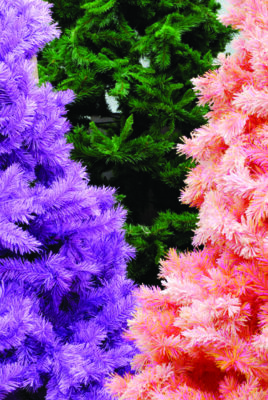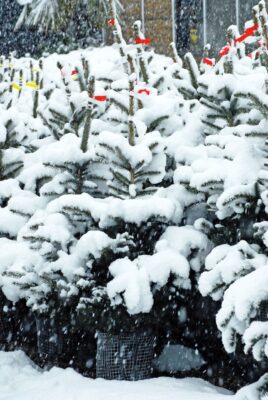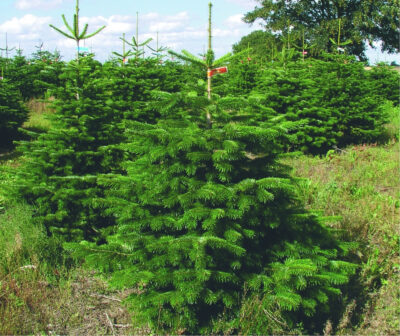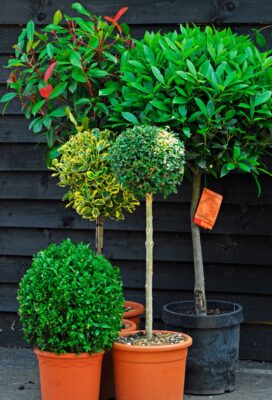It’s the focal point in most homes at Christmas, but is the traditional Christmas tree an essential ingredient for the festive season?

With the cost-of-living crisis biting some families hard, every purchase at this time of year needs scrutiny and that includes our festive decorations.
You don’t need a statement Christmas tree to complete your festivities. Especially if you buy one each year. There are plenty of ways to recreate the tree-effect in your home without ruining your credit rating or adding to the landfill crisis.
Which is more eco? Real or fake
In terms of the traditional tree, you might be surprised to learn that even though a real Christmas tree is usually purchased each year, it is still a greener option than an artificial tree. There are many reasons for this. A real tree takes around ten years to mature to a size suitable for use. A growing tree provides roosting sites for birds and shelter for other wildlife. It also uses carbon dioxide from the atmosphere to build a food reserve, so it locks up the carbon and becomes a carbon sink, and it releases oxygen into the atmosphere as a waste product. Trees are truly magical!

An artificial tree is usually made from plastic and artificial materials and often shipped from China, so compared to a locally grown, organic real tree it has a huge carbon foot print to even just make it and it can’t be easily recycled, often ending up in landfill.
A real tree can be shredded for mulch or composting, or even dried and burned as firewood, or recycled into a wildlife shelter. You can even hire a real tree just for the festivities or buy a pot grown tree that could be re-used for a few years, even if it’s outside. It’s not a good idea to plant a Christmas tree in the garden as it will grow to a huge height and could cause problems.

Pagan roots
Although the first records of what we now call a Christmas tree appear to date back to the 16th Century in Germany, the use of evergreens in winter celebrations was part of the solstice celebrations in nature-based traditions centuries before. Even the Romans are said to have used leafy boughs to decorate their celebrations at Saturnalia (a festival held in mid-December to celebrate the god Saturn); part of their festivities were a huge feast and gift giving.
Early German Christmas trees were decorated with fruit, nuts and gingerbreads and eventually candles too. In 1848 the Illustrated London News published an illustration of the then royal family around a decorated tree in Windsor Castle and this is acclaimed to be the catalyst that rocketed trees into our festive homes.
Tree decorations
If you already have some family heirloom Christmas decorations then use and re-use them. Try not to buy new ones each year, instead make some natural decorations from dried orange slices, cinnamon sticks and fir cones. Recycle any extra baubles via the charity shops so that they get a second or third life, or donate to a scrap store or craft project. Let’s keep the landfill to a minimum by repurposing as much as we can.

Alternative Christmas tree
You don’t have to buy a Christmas tree to complete your festivities. In fact if money is tight – don’t. Why not ring the changes this year and make a tree like structure out of twigs or driftwood or even a fallen branch. You could designate a potted tree or shrub as your festive tree and decorate it outside on a balcony, patio or near the front door. You could even make some wall art in a tree shape and decorate that if space is limited. You don’t have to not have a tree indoors, you could have a small real tree, or an ornamental tree that you decorate with lights and ornaments? A vase of evergreens or a bundle of sticks in the corner can make a statement without the need to purchase something else! Check out the local charity shops to see what you can find and have a good look in the garden for some cones, seed heads and natural decorations.
A stack of fir cones, a painted bottle of fairy lights, or even one of your houseplants can become a focal point on a table or windowsill or the corner of the room. You don’t have to conform to any rules, get the kids involved and let them come up with some ideas and make your ‘festive tree’ a project for all the family so that it becomes part of your own traditions and represents the personality of your home and your own style.
Seasons greetings to you all.












